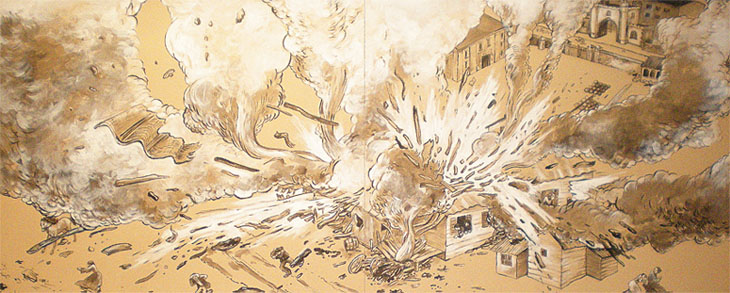
The Allegheny Arsenal was established in 1814. The original arsenal was built on thirty acres of land near Pittsburgh, Pennsylvania on the Allegheny River. Prior to the Civil War, about 300 people were employed at the arsenal. At the height of the Civil War, there were over 1,100 employed there. What was known as the main lab contained 158 employees, mostly young girls and women who were making cartridges for the Union army.

Women employed to work with dangerous gunpowder
What would come to be known as the largest civilian disaster of the war occurred at Allegheny Arsenal in the main lab on September 17, 1862. The initial explosion occurred at 2 p.m. Windows were shattered in the surrounding community. A total of three explosions would rock the arsenal. The explosions could be heard two miles away in downtown Pittsburgh. Not a lot has been written about the horrors that were witnessed there that day. There were 78 people killed, a total of 54 bodies couldn't be identified and were buried in a mass grave.
An employee named Mary Jane Black described one scene as "two girls behind me; they were on fire; their faces were burning and blood running from them. I pulled the clothes off one of them; while I was doing this, the other one ran up and begged me to cover her. I did not succeed in saving either one."
The Daily Post had this to say about the tragic event. "Of the main building nothing remained but a heap of smoking debris. The ground about was strewn with fragments of charred wood, torn clothing, balls, caps, grape shot, exploded shells, hoes, fragments of dinner baskets belonging to the inmates, steel springs from the girls hoop skirts, cartridge paper, sheet iron, and melted lead. Two hundred feet from the laboratory was picked up the body of one young girl, terribly mangled; another body was seen to fly in the air and separate into two parts; an arm was thrown over the wall; a foot was picked up near the gate; a piece of skull was found a hundred yards away, and pieces of intestines were scattered about the grounds. Some fled out of the ruins covered with flame, or blackened or lacerated with effects of the explosion, and either fell and expired or lingered in agony until removed. Several were conveyed to houses in the borough and to their homes in the city. Of these, four or five subsequently died."

Colonel John Symington
Although the investigation absolved Colonel John Symington, the commander of Allegheny Arsenal of the disaster, it appears he should be given some blame. There were reports that he fired boys who had worked there for Irish immigrant women who would work for less pay. Most believe the tragedy occurred because of leaking powder barrels that were being re-used as a shortcut in a time of need for powder.

Powder Magazine Today
All that is left of Allegheny Arsenal today is the powder magazine which serves as a present day storage shed for Arsenal Park. Below is the monument to the victims which rests on the mass grave where the unknown victims rest today. The event didn't gain a lot of attention at the time due to the fact that it occurred on September 17, 1862, the same day as the Battle of Antietam in Maryland. Antietam would come to be known as the single bloodiest day in American history. Allegheny Arsenal would come to be known as the worst civilian tragedy of the war.

Marker on the burial site
This comment has been removed by the author.
ReplyDeletePlease give credit to my blog entry on this topic at http://historicaldilettante.blogspot.com/2012/09/forgotten-history-allegheny-arsenal_18.html, for the image of the Arsenal Memorial in Allegheny Cemetery in Lawrenceville that you took from it to post above. Thanks! Susan M. Morris
ReplyDeleteSue, I will give you credit for anything used above. All images and most blogs I write about have images sent to me by readers. Sorry if they sent me one of your personal photographs. I love history as much as you. Tim.
ReplyDelete